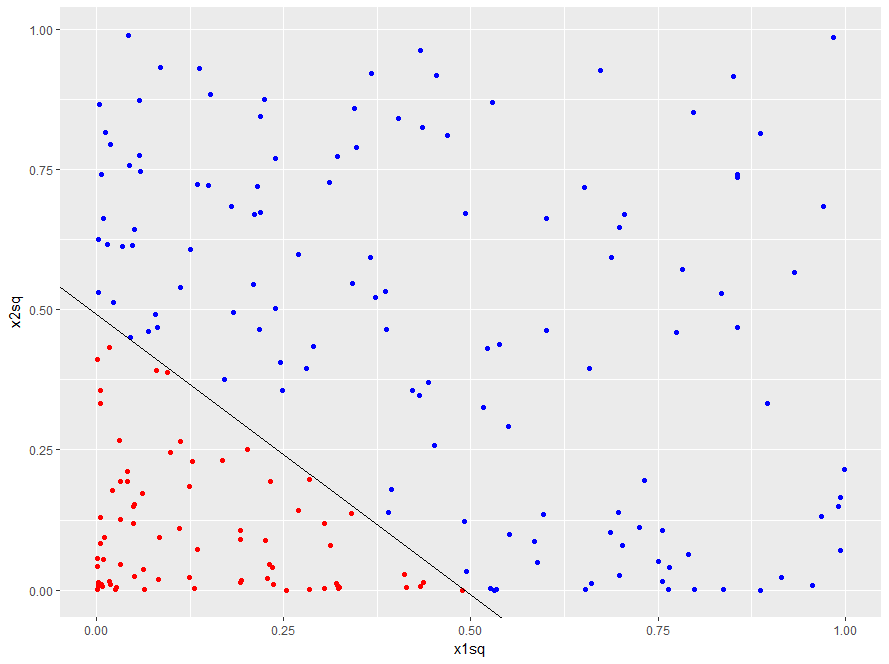The kernel trick
Support Vector Machines in R

Kailash Awati
Instructor
The basic idea
- Devise a transformation that makes the problem linearly separable.
- We'll see how to do this for a radially separable dataset.

Transforming the problem
- Equation of boundary is $x_1 ^ 2 + x_2 ^ 2 = 0.49$
- Map $x_1 ^ 2$ to a new variable $X_1$ and $x_2 ^ 2$ to $X_2$
- The equation of boundary in the $X_1 - X_2$ space becomes...
- $X_1 + X_2 = 0.49$ (a line!!)
Plot in X1-X2 space - code
- Use
ggplot()to plot the dataset in $X_1 - X_2$ space - Equation of boundary $X_2 = -X_1 + 0.49$:
- $slope = -1$
- $yintercept = 0.49$
p <- ggplot(data = df4, aes(x = x1sq, y = x2sq, color = y)) +
geom_point() +
scale_color_manual(values = c("red", "blue")) +
geom_abline(slope = -1, intercept = 0.49)
p

The Polynomial Kernel - Part 1
- Polynomial kernel:
(gamma * (u.v) + coef0) ^ degreedegreeis the degree of the polynomialgammaandcoef0are tuning parametersu,vare vectors (datapoints) belonging to the dataset
- We can guess we need a 2nd degree polynomial (transformation)
Kernel functions
- The math formulation of SVMs requires transformations with specific properties.
- Functions satisfying these properties are called kernel functions
- Kernel functions are generalizations of vector dot products
- Basic idea - use a kernel that separates the data well!
Radially separable dataset - quadratic kernel
- 80/20 train/test split
- Build a quadratic SVM for the radially separable dataset:
- Set
degree = 2 - Set default values of
cost,gammaandcoef0(1, 1/2 and 0)
- Set
svm_model <- svm(y ~ ., data = trainset, type = "C-classification", kernel = "polynomial", degree = 2)
# Predictions
pred_test <- predict(svm_model, testset)
mean(pred_test == testset$y)
0.9354839
# Visualize model
plot(svm_model, trainset)

Time to practice!
Support Vector Machines in R

